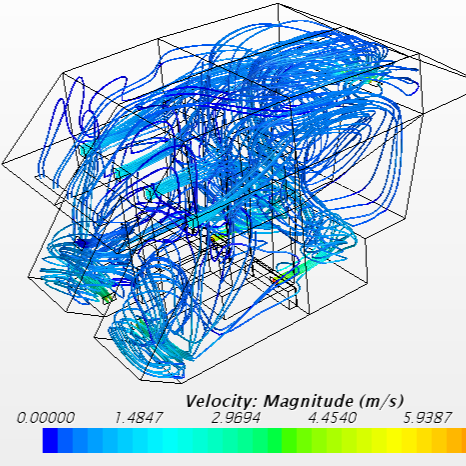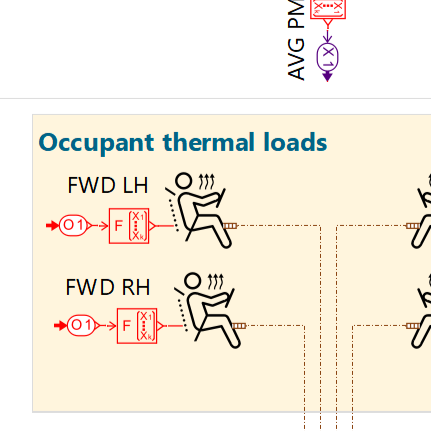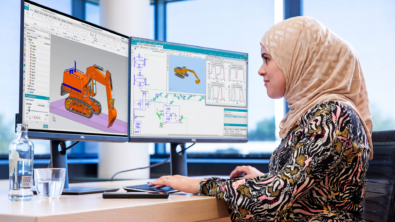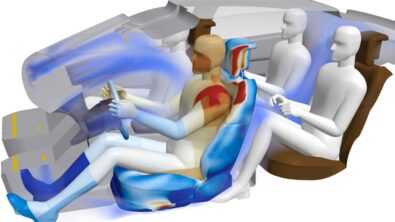Master the art of cabin comfort with 3D-CFD in system simulations and control development
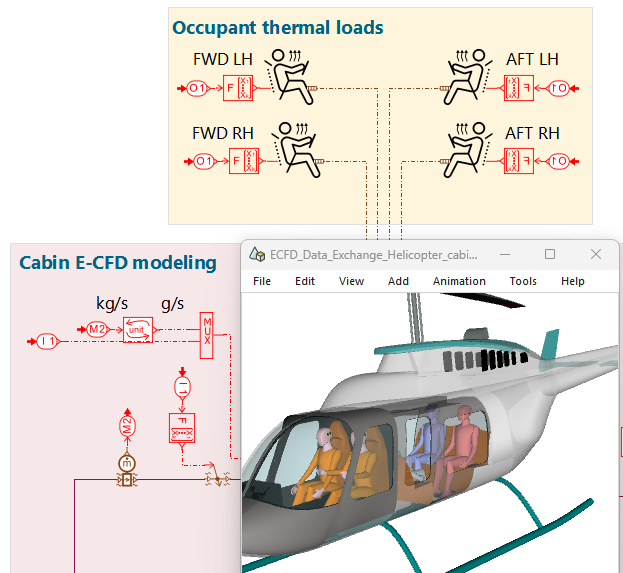
Introduction
Ensuring thermal cabin comfort and safety inside vehicle and aircraft cabins is a crucial aspect of modern development, significantly impacting the overall driving or flying experience and passenger well-being. This is even more important in the era of electric vehicles, where energy-efficient systems require precise thermal management and software for optimizing energy consumption.
Thermal cabin comfort development typically involves two different engineering disciplines: one focusing on system-level developments where the HVAC (Heating, Ventilation, and Air Conditioning) performance and control are dependent on the entire vehicle or aircraft system, and a 3D development where air distribution into the cabin is optimized.
However, engineers often face challenges in aligning developments from these two approaches, resulting in duplicated work, labor-intensive scripting to establish connections, and a high risk of incorrect assessments.
This is where the new feature from Simcenter Amesim comes in, bridging the gap between system simulation and 3D CFD to streamline the engineering process for thermal cabin comfort.
In an ideal world…
The ideal scenario would be a collaborative effort between engineers from both disciplines, leveraging each other’s work to develop the best HVAC performance for the best aircraft or vehicle performance possible. This requires the level of detail from a CFD simulation, but also the performance over full driving cycles or mission profiles and control algorithms that are perfectly tuned with the physical system.
Now, with the release of Simcenter Amesim 2404, this ideal scenario is no longer a dream, but a reality. The new embedded CFD data exchange feature makes collaboration between system engineers and CFD engineers easier, faster and with less room for errors.

Introducing the Embedded CFD Data Exchange
The new Embedded CFD data exchange feature in Simcenter Amesim allows you to use the CFD results generated by Simcenter Star-CCM+ in your system simulation model. Behind the scenes, this is much more than just a data import functionality. An easy-to-use app within Simcenter Amesim splits the big air volume into several sub-volumes without having to modify the original CFD files. The coupling of CFD data and the lumped model is done automatically, even like the generation of the sketch that represents the CFD model in Simcenter Amesim and connecting all thermal masses, air volumes, heat sources and walls. This makes the new feature much more than a data import function, it’s a smart 1-to-1 coupling between CFD and the lumped system simulation model.
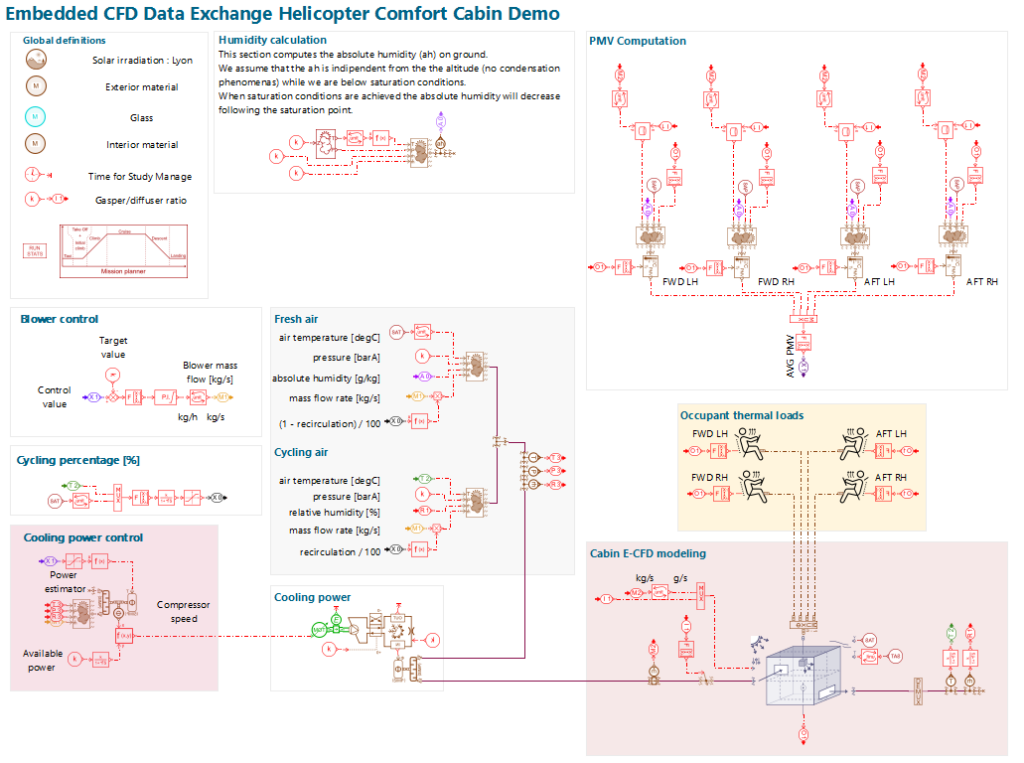
Embedded CFD data exchange in action on cabin comfort
To illustrate the power of this new feature, let’s look at an example where we evaluate cabin thermal comfort for a helicopter over a 3-hour mission profile. Utilizing the benefits of system simulation in Simcenter Amesim, we were able to explore the entire design space using a Monte Carlo approach, running 200 simulations in less than 3 minutes.
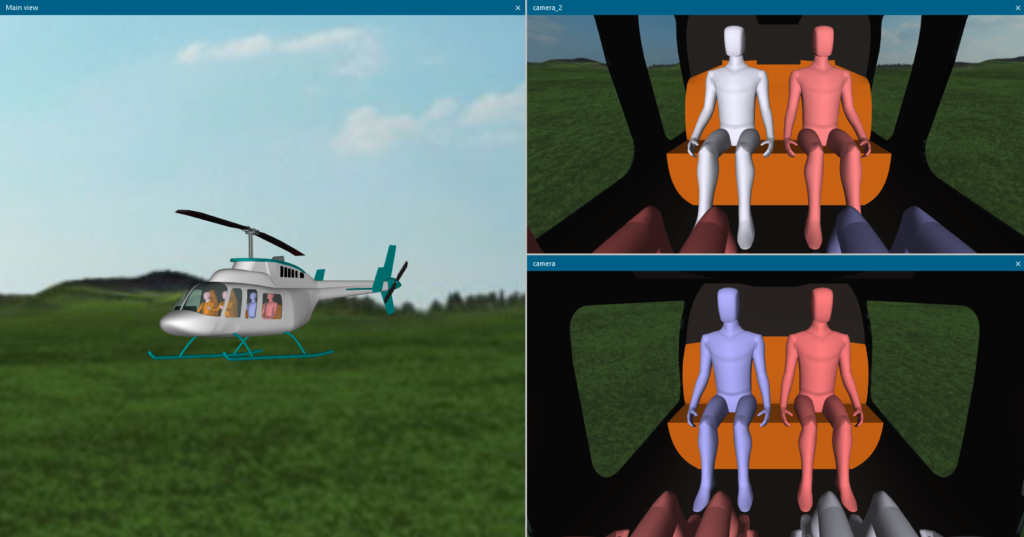
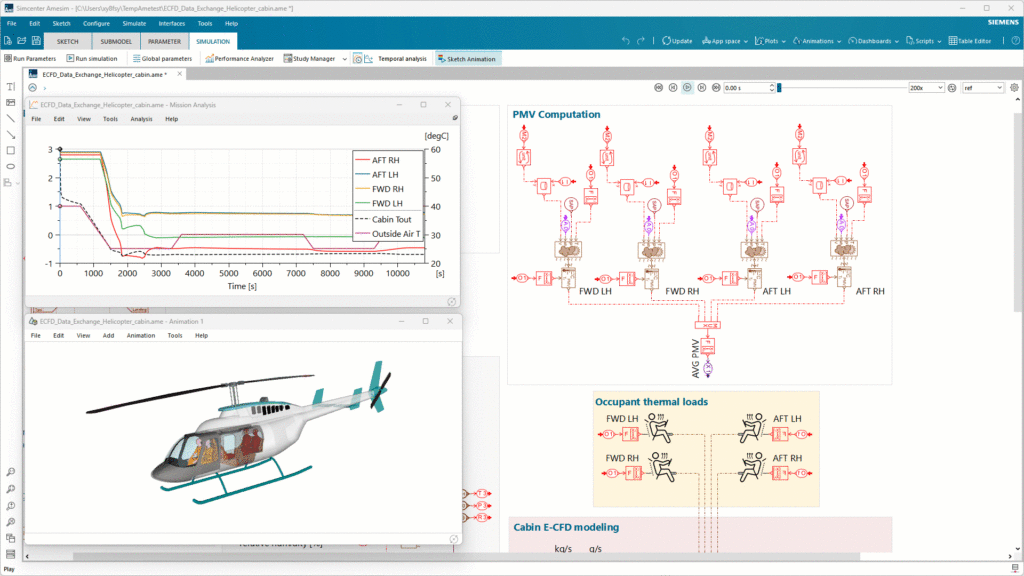
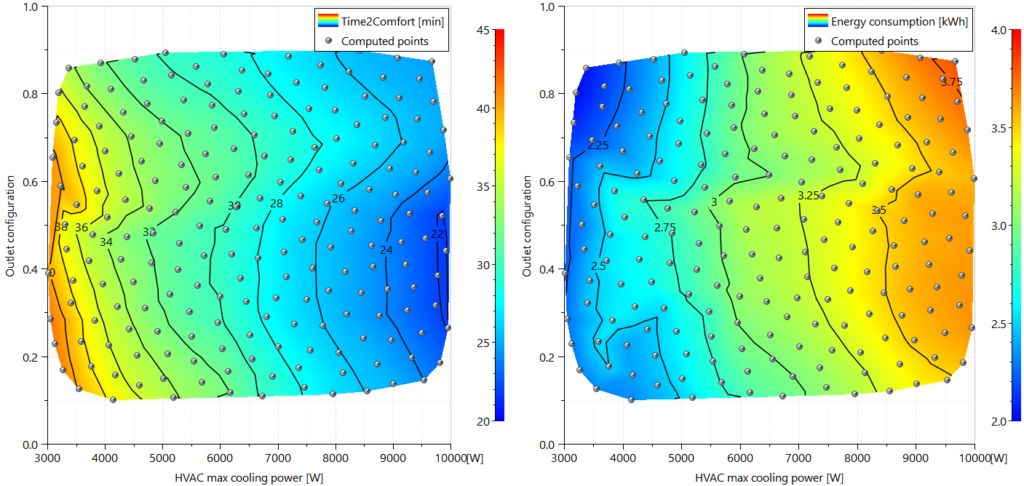
This example demonstrates the value of combining detailed CFD calculations in a system simulation model to optimize HVAC system implementation for cabin thermal comfort. With this new feature, we can streamline the engineering process, reduce the risk of errors, and ultimately create a more comfortable experience for vehicle and aircraft passengers. It allows engineers to embed CFD results in their system models and use them for control optimization and simulations over full mission profiles.
Is it only for cabin models? Of course not! Engineers can use the embedded CFD data exchange to model any air volume, such as air-cooled batteries or avionic bays. Don’t hesitate to challenge us with your ideas!
Want to learn more?
- Explore other new features from Simcenter systems simulation release 2404
- Watch the on-demand webinar on how to combine detailed high-fidelity simulation of passenger comfort with close to real-time simulation to design efficient control systems.
- Try out Simcenter Amesim for yourself using the online trial.
